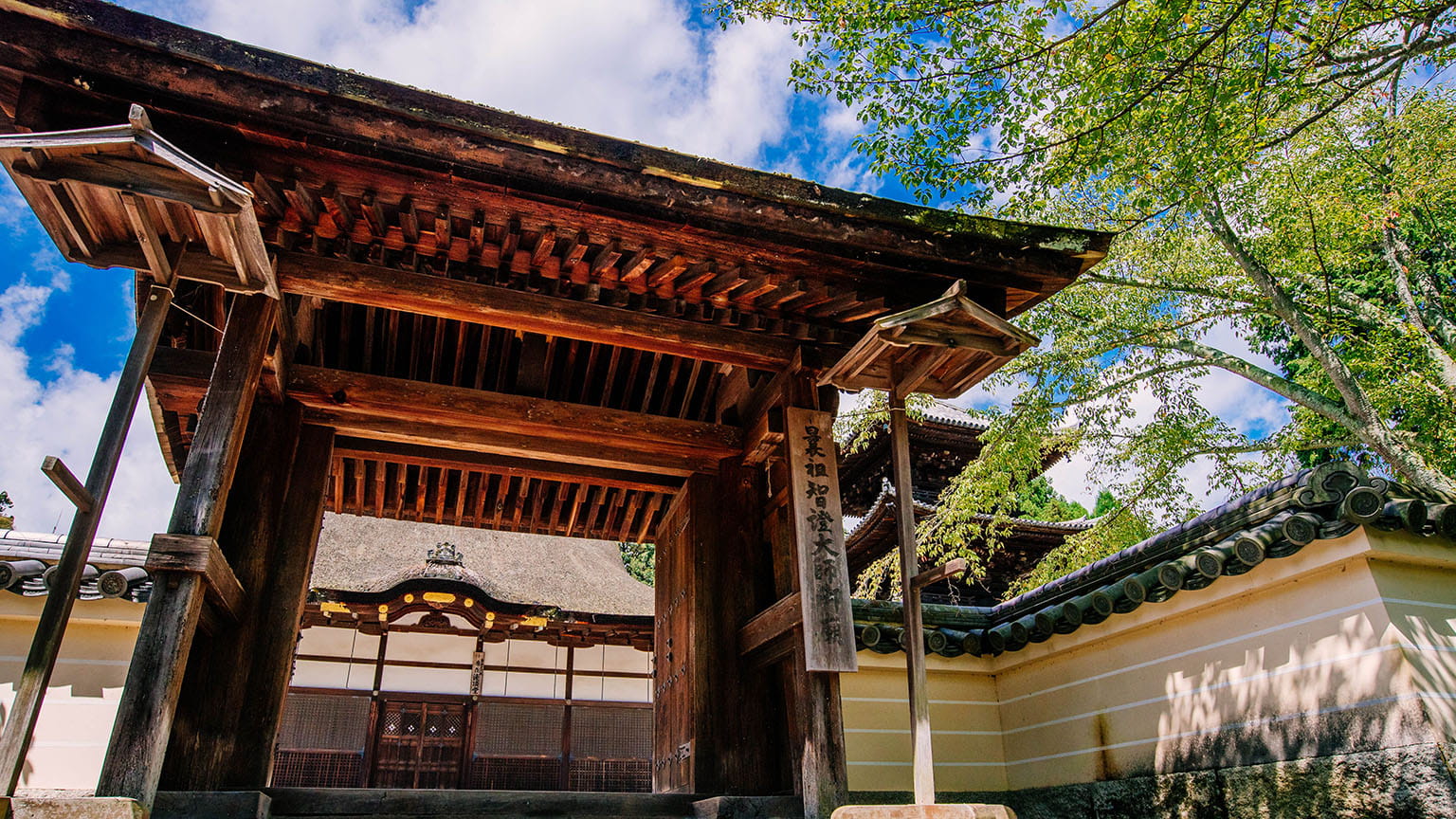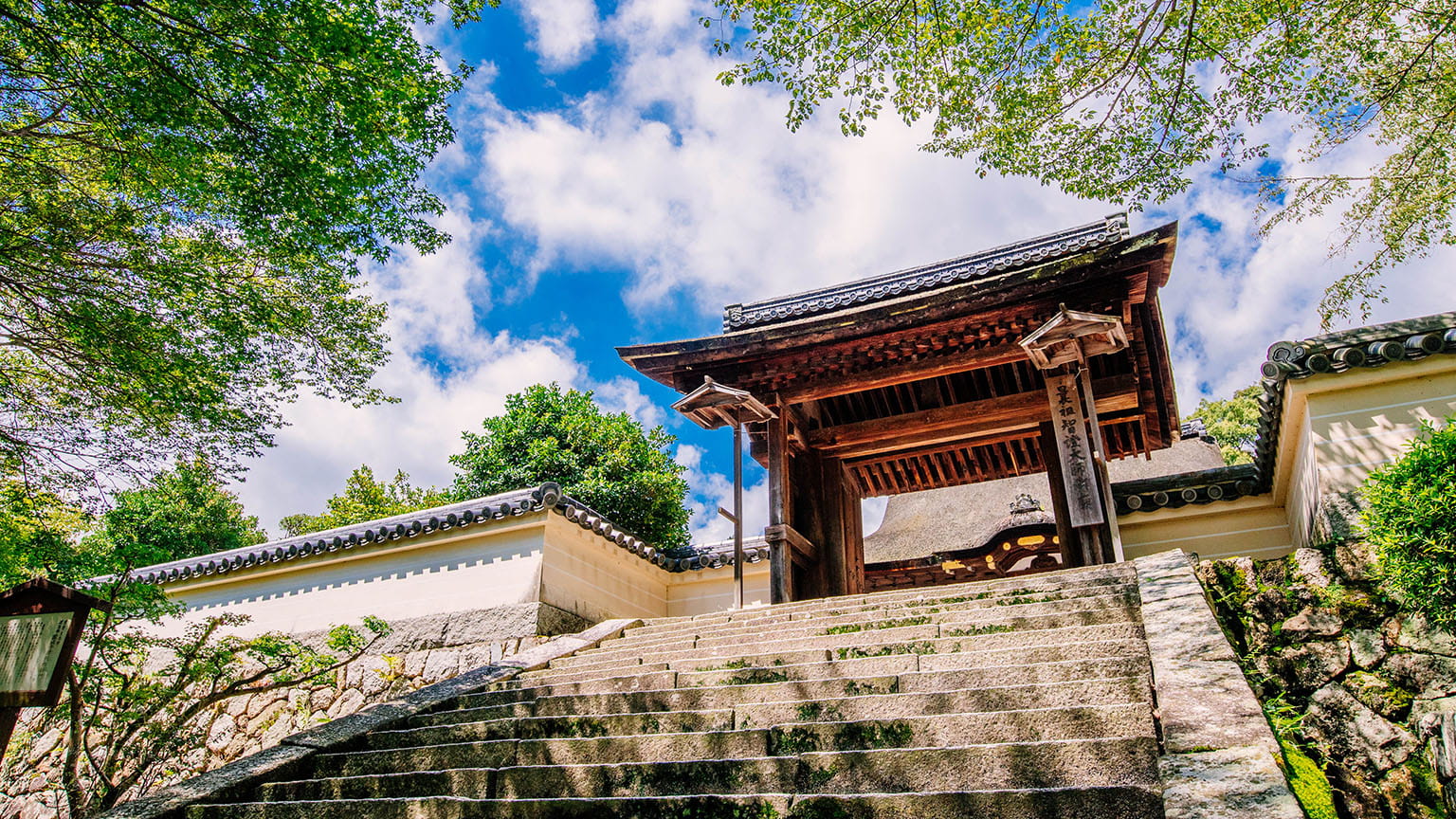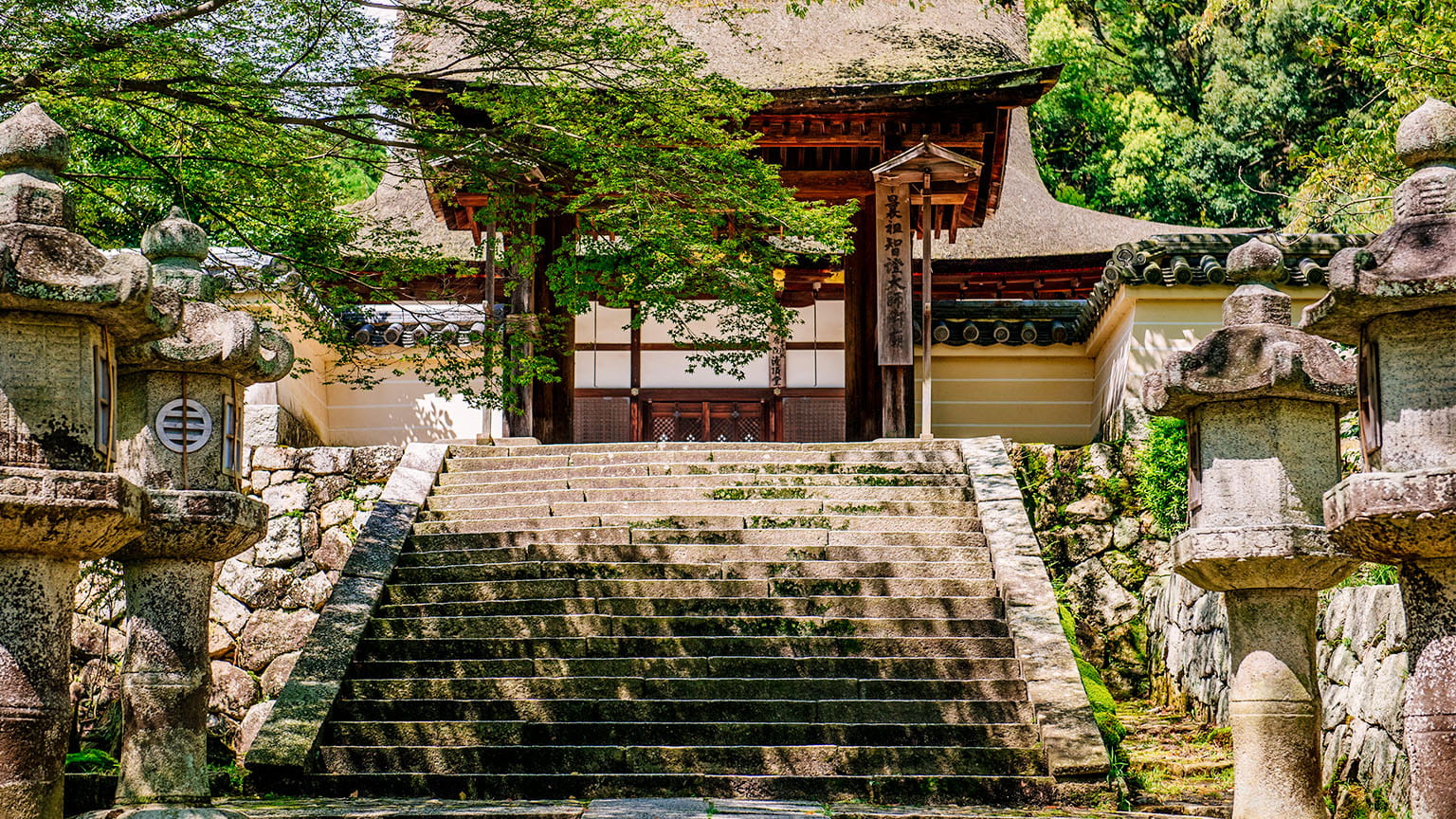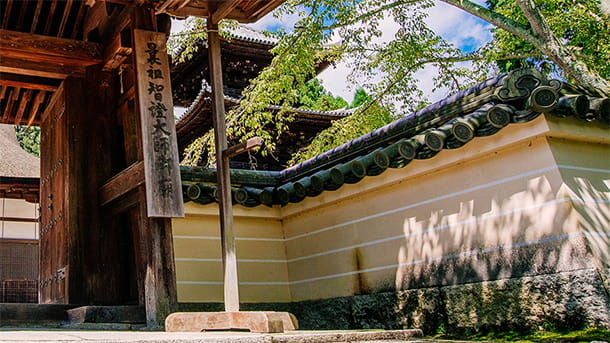Cultural Property of Japan
Toin Yotsuashimon Gate
READER
The Yotsuashimon Gate is built into the earthen wall surrounding the front entrance of the Toin. line It aligns with the Kanjodo Hall, the Karamon Gate, and the Daishido Hall to mark out a straight that leads towards the mountainous area on the western side of the temple.
The Yotsuashimon Gate was constructed in 1624. It was initially built in the munakado roofed-gate style, but was later changed to a yotsuashimon (four-legged) style, and then hikaebashira bracing struts were also added. Together with the tandai lanterns placed on the stone-paved road in front of the temple, the gate creates a saintly atmosphere befitting the entrance to a notable holy site.
- −
- 1st year of the Kanei Era (1624)
Please rate this cultural heritage introduction page.
-
-
Satisfaction
-
-
Understanding
-
-
Recommendation
-
-
Attractiveness
-









